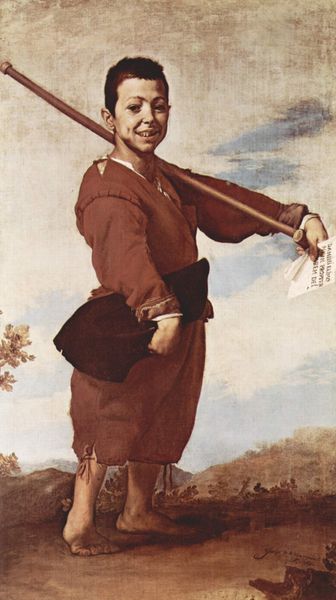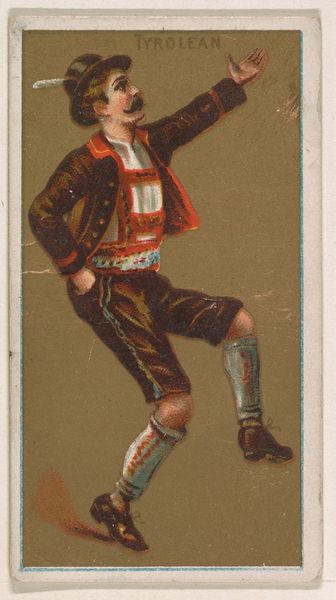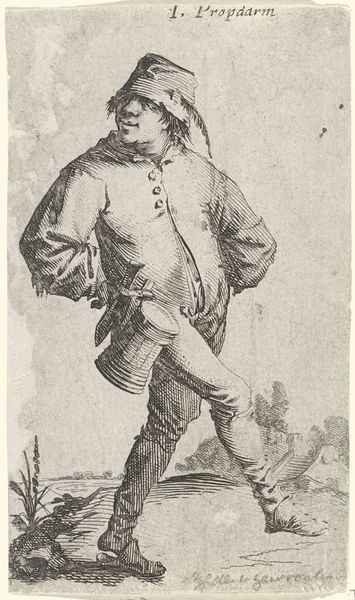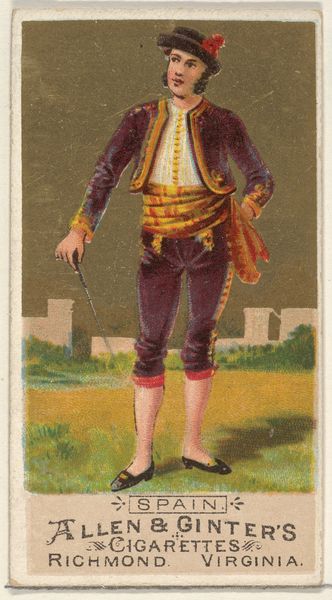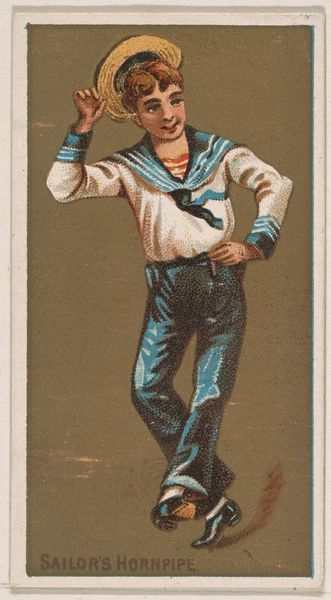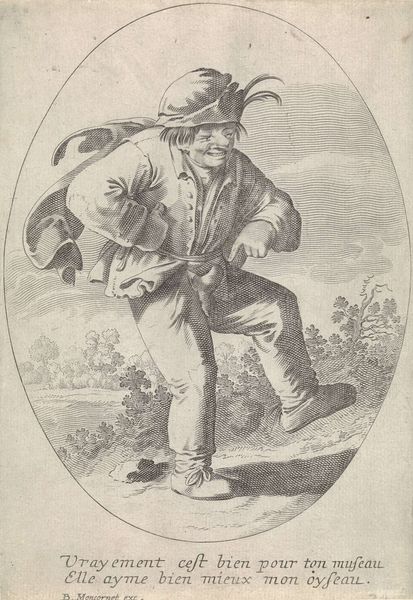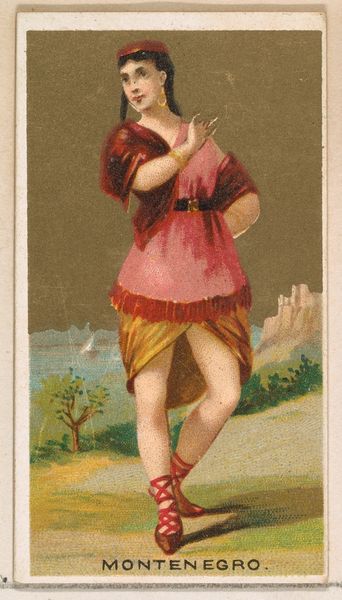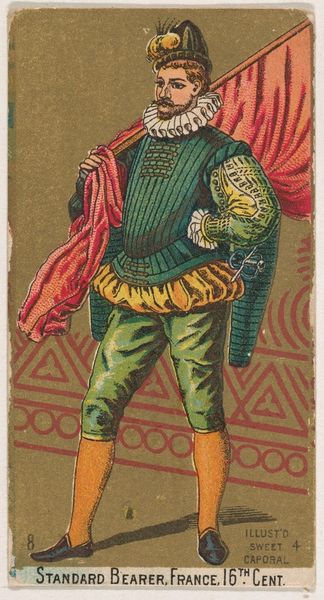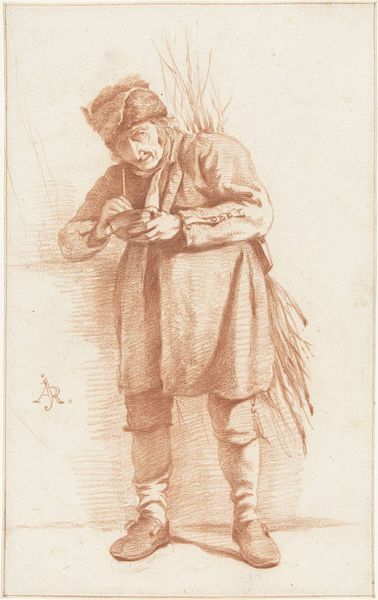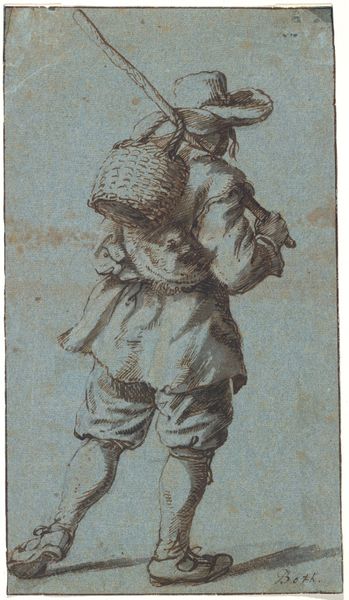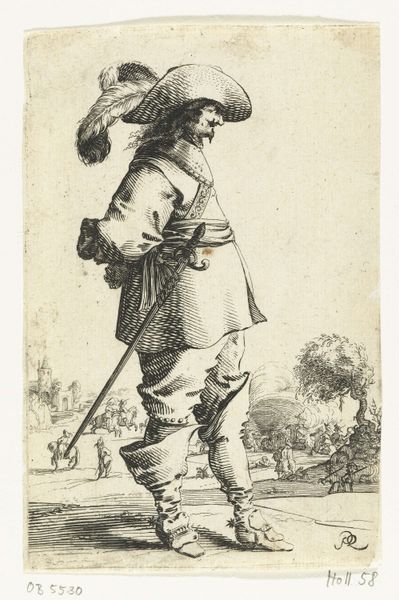
painting, oil-paint
#
portrait
#
painting
#
oil-paint
#
figuration
#
romanticism
#
genre-painting
Copyright: Public Domain: Artvee
Curator: What a lively oil sketch this is! Painted circa 1838 by Wilhelm Marstrand, it’s entitled “Italian. Study for The St. Anthony Feast Day in Rome”. Editor: My eye is immediately drawn to the energetic pose. He’s almost suspended in mid-air! The angle and bright clothes create a sensation of lightness, yet there's something deeply unsettling about his eyes, darting from beneath a brow suggesting great torment, but why? Curator: Marstrand was part of the artistic circle who ventured to Italy in search of classical inspiration during the Romantic era. They often sought to portray everyday life, what was perceived as "picturesque" local traditions, but as with all images, what does its context tell us about such displays? Editor: "Picturesque," precisely! I see more than just a snapshot of Roman festivity. Notice the man holds a dark hat closely to his chest like a protective ward? Perhaps he is afraid, insecure or defensive about the spectacle being made? This might well be the psychological undercurrent of what looks initially like harmless romantic art. Curator: Fascinating. St. Anthony's feast days, celebrated widely in Rome, were indeed known for their boisterous energy. Marstrand might well be critiquing the theatrical aspect of such events. This work might reveal less about the genuine rituals and more about how cultural events are packaged for outside consumption. Editor: The whip in his raised hand intrigues me further; it represents control or perhaps even subjugation. Given the historical context, considering issues of class and cultural representation become critical. Does this capture celebrate or scrutinize the spectacle? I suggest a degree of alienation permeates here beyond festive spirit! Curator: Indeed, and understanding who commissions and curates images has become so much more important in assessing historical works, like this one. Looking beyond the surface informs our curatorial choices as much as it drives our appreciation! Editor: Precisely! These images speak far beyond initial impression, offering glimpses into cultural memories, attitudes and psychological conditions buried within visual symbols. What is at once seems happy celebration suggests torment too.
Comments
No comments
Be the first to comment and join the conversation on the ultimate creative platform.
